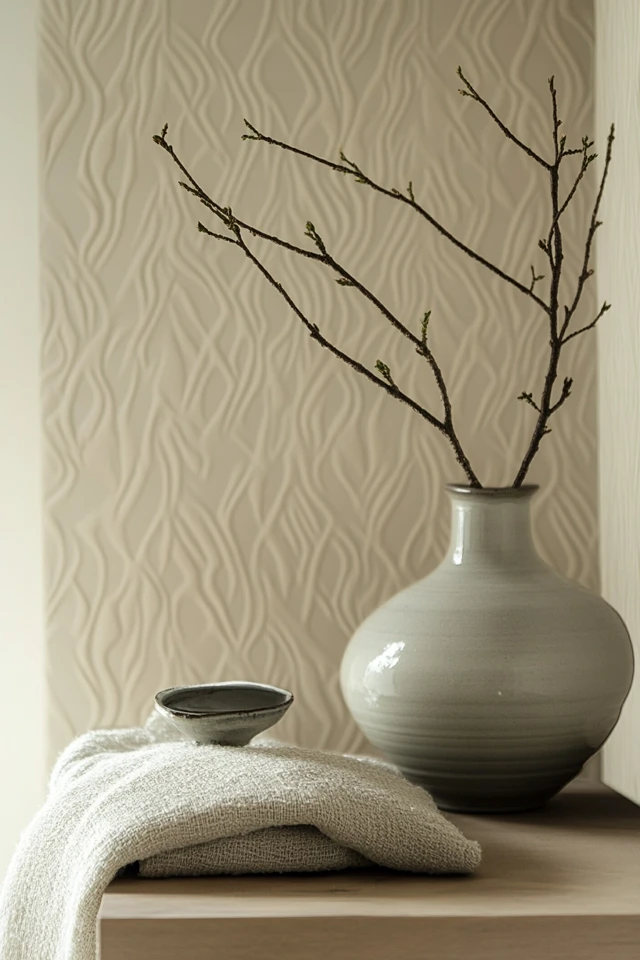Minimalist interiors are defined by their clean lines, neutral color palettes, and a focus on simplicity and functionality. But even in minimalism, there’s room for subtle patterns to add depth, texture, and visual interest without disrupting the calm aesthetic. Subtle patterns can bring warmth and personality to minimalist spaces while maintaining the understated elegance that defines the style.
I’ll never forget the first time I introduced subtle patterns into my minimalist living room. I was worried it might look too busy, but a soft, tone-on-tone patterned rug completely transformed the space. The room still felt serene and uncluttered, but the subtle details added just enough character to keep it from feeling cold or flat. Over the years, I’ve learned how to weave patterns into minimalist spaces seamlessly, and I’m excited to share those insights with you!
Why Subtle Patterns Work in Minimalist Interiors
- Add Depth: Patterns create dimension and prevent the space from feeling flat or sterile.
- Enhance Texture: Subtle patterns introduce layers of visual interest without overwhelming the design.
- Maintain Simplicity: Minimalist interiors prioritize calm and order, and understated patterns align with this philosophy.
- Personalization: Patterns let you add personality and charm while staying true to minimalism’s clean aesthetic.
1. Start With Tone-on-Tone Patterns
Why It Works:
Tone-on-tone patterns are the perfect introduction to patterned elements in minimalist interiors. They’re subtle and blend effortlessly into neutral color schemes.
How to Incorporate It:
- Use a patterned area rug with a monochromatic design, such as geometric shapes or soft lines.
- Choose bedding or throw pillows with stitched or embossed patterns in the same color family as the fabric.
- Look for wallpaper with a tone-on-tone design, like matte-on-gloss finishes or fine, subtle stripes.
Pro Tip: Stick to soft, neutral colors like beige, gray, or white to maintain the minimalist aesthetic.
2. Add Patterned Textiles
Why It Works:
Textiles are an easy way to introduce patterns without making permanent changes to your space.
How to Incorporate It:
- Layer a throw blanket with a herringbone or chevron pattern over a plain sofa.
- Add pillows with minimalist prints, like pinstripes, dots, or small-scale geometric designs.
- Opt for sheer curtains with a subtle woven texture or repeating pattern.
Pro Tip: Use no more than one or two patterned textiles in a room to avoid visual clutter.
3. Use Geometric Patterns
Why It Works:
Geometric patterns align naturally with minimalist design due to their clean lines and structured forms.
How to Incorporate It:
- Add a geometric patterned rug under a coffee table to anchor the space.
- Use wall art featuring abstract shapes or line drawings.
- Choose light fixtures with geometric designs, like hexagonal or circular frames.
Pro Tip: Keep the scale of the pattern small to medium to ensure it remains understated.
4. Introduce Patterns Through Furniture
Why It Works:
Patterned furniture adds interest and serves as a statement piece without overpowering the minimalist design.
How to Incorporate It:
- Choose a dining chair or bench with a subtle plaid or striped fabric.
- Use a coffee table or side table with a patterned inlay, like herringbone wood or terrazzo.
- Opt for an armchair with a textured weave or subtle embroidered design.
Pro Tip: Balance patterned furniture with plain pieces to maintain a clean, cohesive look.
5. Focus on Natural Patterns
Why It Works:
Natural patterns, such as those found in wood, stone, or woven materials, add organic texture to minimalist spaces.
How to Incorporate It:
- Use a marble countertop or backsplash with soft veining.
- Incorporate wooden furniture with a visible grain pattern.
- Add woven baskets or rattan chairs for a natural, textured look.
Pro Tip: Choose materials with soft, irregular patterns for a more organic and calming effect.
6. Play With Repetition
Why It Works:
Repetition of subtle patterns creates rhythm and harmony, enhancing the minimalist aesthetic.
How to Incorporate It:
- Use tiles with a repetitive design, like subway tiles or small-scale hexagons.
- Add artwork featuring repeated shapes or lines.
- Choose a patterned duvet or throw with evenly spaced motifs.
Pro Tip: Keep the rest of the room simple to let the repeated pattern stand out without becoming overwhelming.
7. Incorporate Subtle Patterns in Wallpaper
Why It Works:
Minimalist wallpaper with a subtle pattern adds character to walls without overpowering the space.
How to Incorporate It:
- Use wallpaper with soft, neutral patterns, such as vertical stripes or faint floral designs.
- Try peel-and-stick options for an easy, non-permanent solution.
- Apply patterned wallpaper to a single accent wall for a minimalist yet striking effect.
Pro Tip: Stick to muted tones and understated designs for a cohesive look.
8. Balance Pattern With Negative Space
Why It Works:
Negative space is a core principle of minimalism, and balancing patterned elements with empty areas ensures the space feels open and uncluttered.
How to Incorporate It:
- Place patterned decor, like a rug or throw pillow, in areas with plenty of surrounding neutral space.
- Avoid overloading the room with too many patterns—let each piece breathe.
- Use patterns sparingly on larger surfaces, like walls or furniture, to maintain balance.
Pro Tip: Step back and assess the room to ensure no area feels too visually busy.
9. Experiment With Subtle Contrasts
Why It Works:
Subtle contrasts in color and texture within patterns can create interest without disrupting the minimalist vibe.
How to Incorporate It:
- Use a white-on-gray or beige-on-taupe patterned rug for a soft yet noticeable contrast.
- Layer a lightly patterned pillow on a solid-colored sofa for a pop of texture.
- Choose curtains with a faintly contrasting stripe or dot pattern.
Pro Tip: Stick to low-contrast combinations to keep the design harmonious and understated.
10. Layer Patterns With Textures
Why It Works:
Combining patterns with textures adds depth and richness to minimalist interiors.
How to Incorporate It:
- Pair a textured linen throw with a subtly patterned pillow.
- Use a woven rug with a faint diamond or chevron design.
- Incorporate textured wall art or decor, such as embossed ceramic pieces.
Pro Tip: Keep the color palette consistent to ensure the patterns and textures complement each other.
Picture Gallery
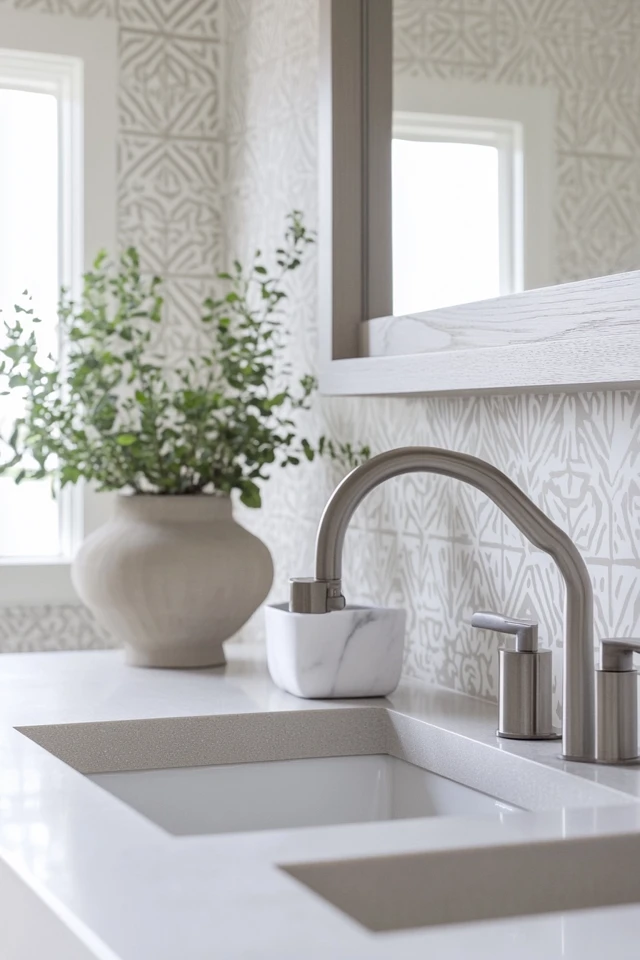
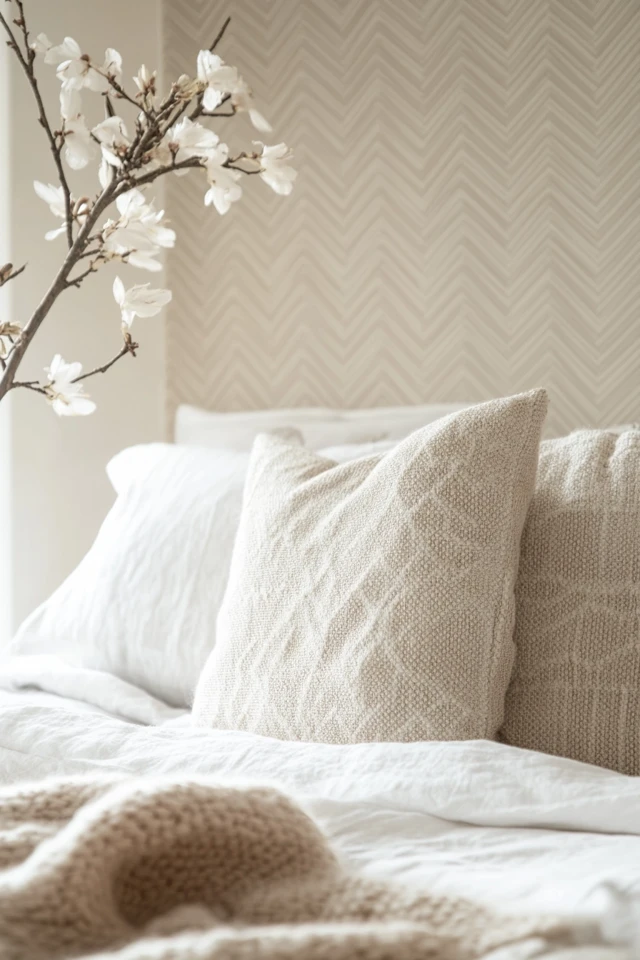
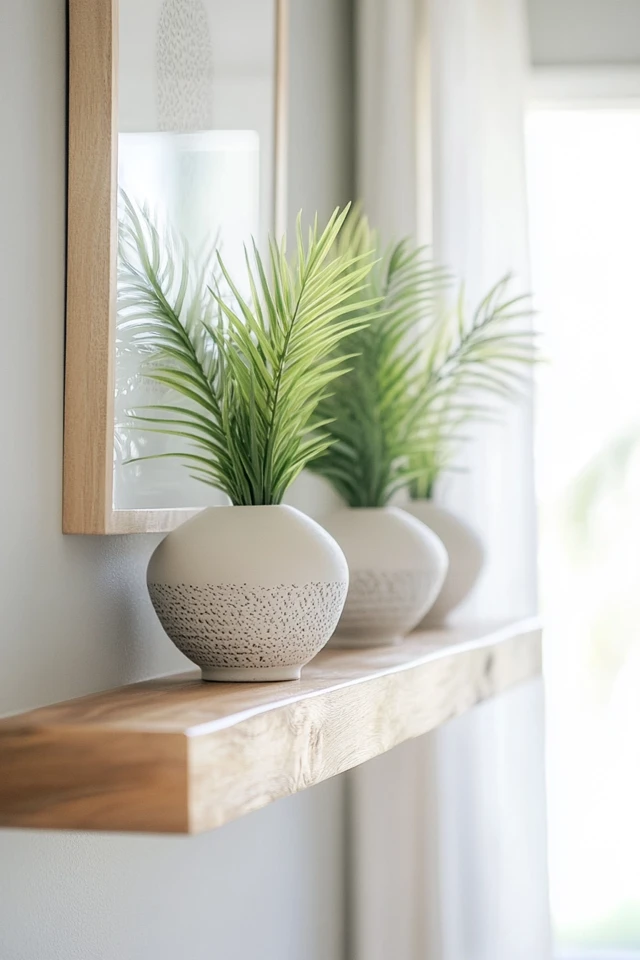
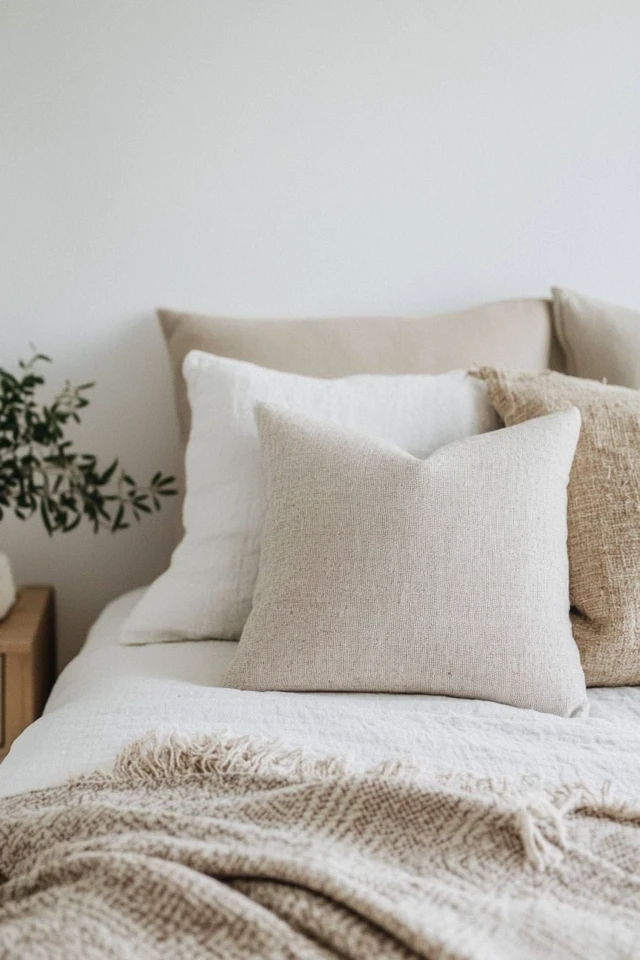

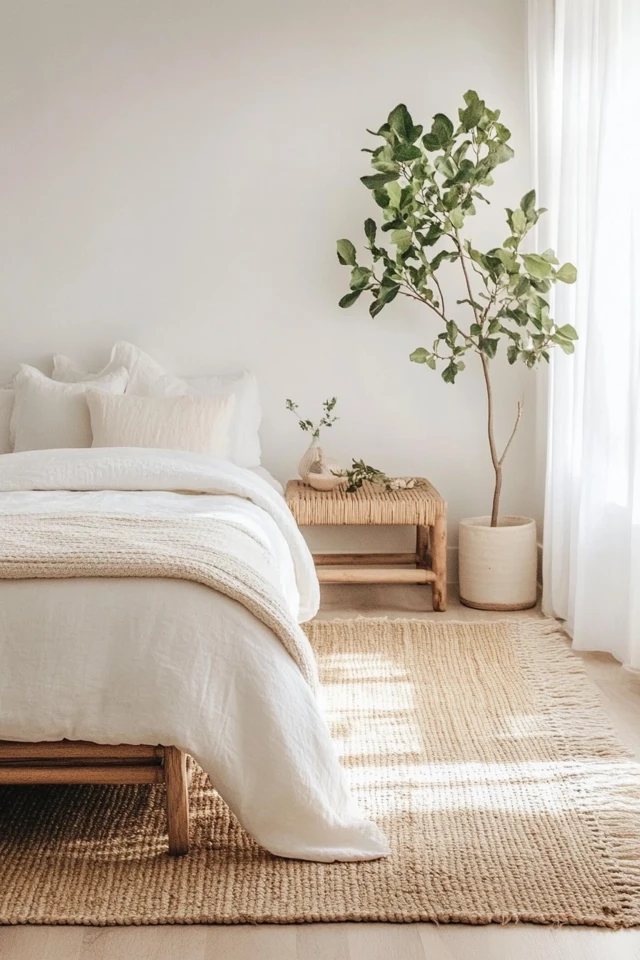
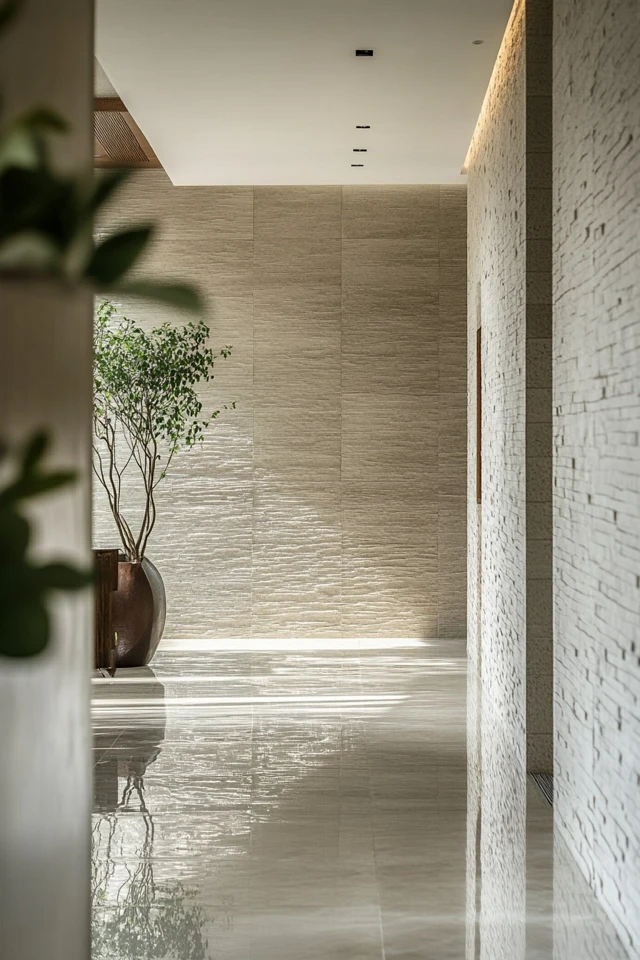
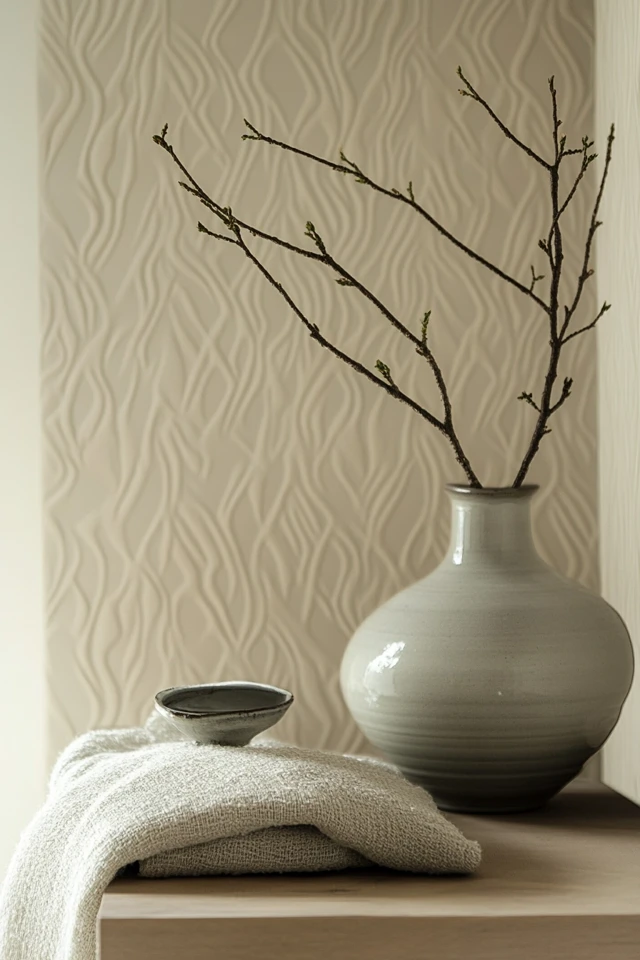
Conclusion
Using subtle patterns in minimalist interiors is a thoughtful way to add depth, warmth, and personality while preserving the clean, calming essence of the design. Whether through textiles, furniture, or natural materials, patterns can create a harmonious balance between simplicity and interest.
The key is to keep it intentional—choose patterns that align with your overall aesthetic and avoid overloading the space. With these tips, you can create a minimalist home that feels layered, inviting, and uniquely yours.
FAQs
1. What types of patterns work best in minimalist interiors?
Tone-on-tone, geometric, and natural patterns work best as they blend seamlessly with minimalist designs while adding texture and depth.
2. Can I mix patterns in a minimalist space?
Yes, but keep the mix subtle. Combine no more than two or three patterns, and ensure they share a similar color palette for cohesion.
3. How do I prevent patterns from overpowering my minimalist decor?
Use patterns sparingly and balance them with plenty of negative space. Stick to soft, muted tones and simple designs.
4. Are patterned walls too bold for minimalism?
Not necessarily. A single accent wall with subtle, neutral patterns can enhance a minimalist space without disrupting its simplicity.
5. How can I introduce patterns without making permanent changes?
Use patterned throw pillows, blankets, rugs, or removable wallpaper to experiment with patterns without commitment.

